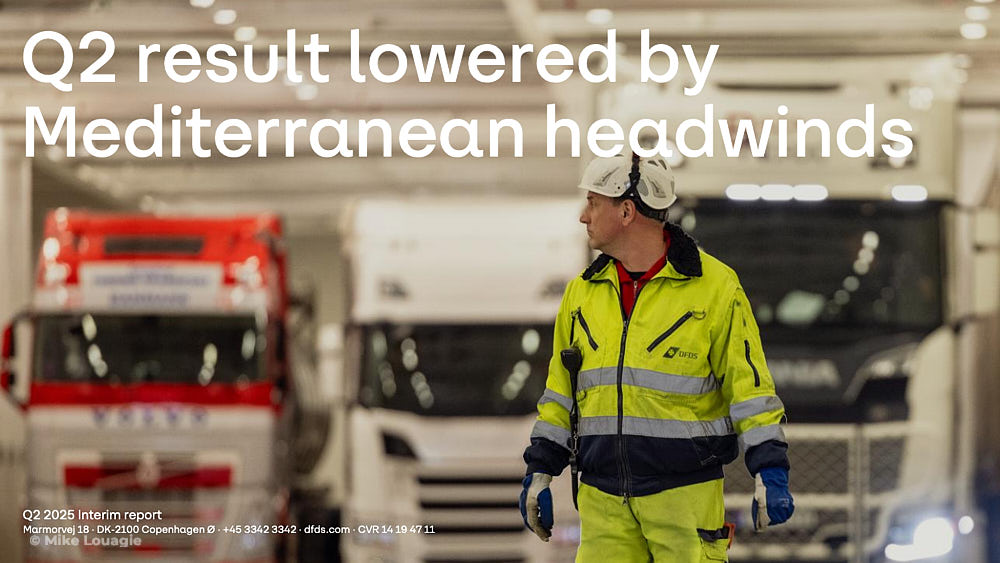Q2 2025
- Revenue: DKK 7.8bn (+3%, organic –2%)
- EBIT: DKK 163m (–69%)
- Adjusted free cash flow: DKK 538m (–26%)
- CO₂ ferry emission intensity: –4.1%
Outlook 2025
- EBIT: DKK 0.8–1.0bn (previously ~DKK 1.0bn)
- Revenue growth: ~5%
- Adjusted free cash flow: ~DKK 1.0bn (unchanged)
CEO’s comments
- Most of the network performed as expected.
- Mediterranean remains the key earnings challenge.
- Logistics Boost turnaround on track.
- Türkiye & Europe South turnaround slower; breakeven may be delayed.
Geopolitics
- New EU–USA trade deal sets a 15% tariff on EU exports to USA.
- Short-term EU growth may be impacted.
- Nearshoring expected to accelerate trade with Türkiye and Morocco, benefiting DFDS’s network.
Read the Q2 2025 interim report
Or click on this cover below for the full presentation:













